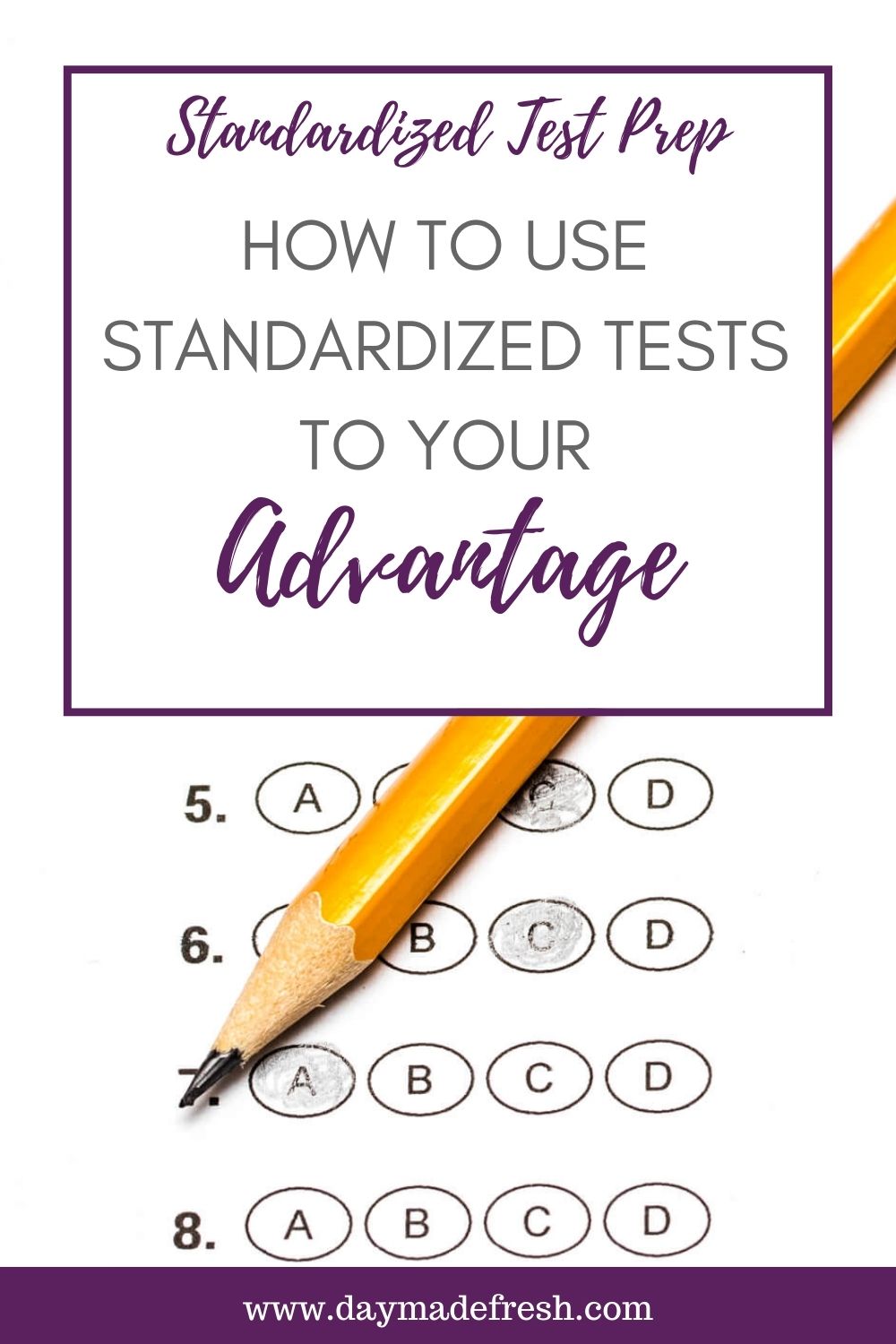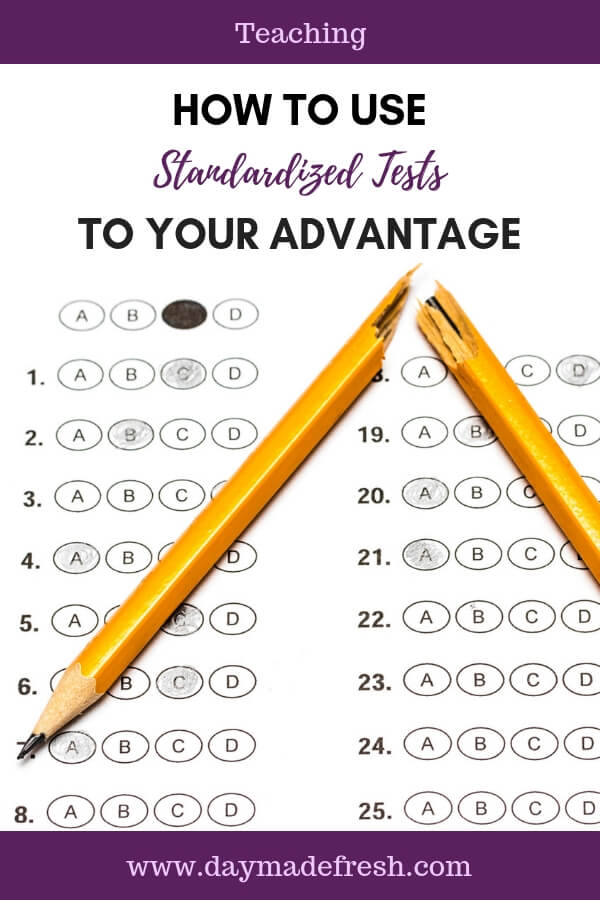Standardized tests are a part of our educational landscape and it doesn’t look like they’re going away anytime soon. So…what can we do as teachers to make the best of these tests?
If you’re like me you’ve witnessed students in tears from test anxiety, teachers so focused on test scores that they only focus on test prep, and administrators that only adequate effective teachers with high standardized test scores. I struggle with how frequently our students are tested and how much emphasis is put on standardized tests.
I teach elementary students and students are tested three times a year using NWEA for math and reading and DIBELS for reading and are assessed each year using the state standardized assessment. Our district uses our students’ NWEA scores as part of our teacher evaluation. If a certain percentage of students do not meet their growth target teachers are not considered highly effective. That puts a lot of pressure on teachers to focus solely on test prep and in turn, puts a lot of pressure on students to perform.
Standardized tests can be beneficial if they are used effectively.

Over the course of my 8+ years of teaching elementary students, I’ve discovered a few ways to use test data effectively, to prepare students without teaching directly to the test, and to counteract test anxiety that I would like to share with you. Together we can make standardized tests work for us.
Analyze Your Students’ Needs
Since standardized tests are something we have to do; we may as well use them to our advantage. The data can be a starting point to see where your students are at and where you need to get them.
There are so many things that you could teach your students over the course of a year. I don’t know about you, but I feel like I can never cover everything. I’ve found I can make things easier on myself by eliminating any skills my students already know. I also try to focus in on any area that a majority of my students score low in. This helps me make the most of my instructional time.
Thankfully, many standardized tests have reports that can help you analyze what your students need and what their strengths are. Use these reports to your advantage. I’ve even created my own spreadsheets to compare student achievement data between different tests to gain a better picture. Since we have to have our students complete these tests we may as well use the data to our advantage to better meet our students’ needs.
Evaluate Your Curriculum
When you first start looking at the data you receive from a standardized test it may seem overwhelming how much you need to cover especially if the majority of your class scores below where they are expected to be. This often means you need to help your students achieve more than a year’s growth.
Once you analyze what your students’ needs are the next step is to evaluate your curriculum and programs. You gauge what you’re already covering that will meet your students’ needs or that your students have already mastered. Then, if needed, you can supplement your instruction if your curriculum doesn’t cover a particular skill.
To make sure I cover everything I need to, based on my students’ needs, the district thematic map, standards, etc., I like to make a year at a glance document on excel or google sheets. Showing what topics I plan to teach for each subject during each week of the year. This helps me make sure I get to everything before the end of the year testing, that I finish a unit before a long break, and if possible teach similar topics across subject areas at the same time. The best part of this plan being in Google Sheets is that when things come up (as they always do) you can edit or rearrange when to teach things.
CLICK HERE to get my Year at a Glance Template from Teachers pay Teachers.
The important thing to remember is that while the main outline of your plan will be similar from year to year it will be different based on the students you have that year and what their needs are. In my opinion, that’s one of the reasons that I love teaching…each year is different even when you teach the same grade.
Teach Testing Strategies
Usually, when we talk about teaching testing strategies we refer to strategies such as reading the questions before reading a passage or crossing out answers that are obviously wrong. While these are important strategies to teach students I believe it is vitally important to also teach our students coping strategies for test anxiety.
Our students are going to take a LOT of tests throughout the course of their educational career. Many students struggle with test anxiety and consequently do poorly even if they know the material.
There are some students that naturally do well on tests and handle the challenge of difficult or unknown problems with ease. They seem to have a natural ease when it comes to taking a test. On the other hand, there are students that have a physical reaction to taking a test. They become anxious, they may cry, their brain shuts down.
The question is how can we help all students be prepared to step up to a test with confidence, even if they’re not going to know the answer to every question.
On NWEA, the test my students take in the fall, winter, and spring students are given progressively more difficult questions the better they do on the test. While this is a great way to see how much a student knows it can bring out anxiety in many students.
It was because of this test that I started to teach my students how to handle when they face a question they don’t know how to answer or that is challenging for them. We work on these strategies throughout the year. I expose them to a variety of activities that challenge them and often put them in a place of feeling unsuccessful. We then discuss how to face the challenge and what strategies they can use.
This year many of my students would start to grumble, “This is hard!” when I would introduce a new activity or assignment. Then I would start to see students with their heads down in defeat or faces covered with their hands often before they even began the assignment. In their minds, something that was “hard” was impossible. We did a few lessons about the importance of challenging ourselves, so we can grow and learn. Eventually, I started to hear students say, “This is a challenge!” In an excited voice or as a reminder to a classmate.
The goal of teaching coping strategies is to change your students’ mindsets or paradigms. This way when they need to tackle a standardized test down the road and you’re not able to offer a lot of support they have these strategies to pull out and support themselves. Hopefully, they will be able to use them the rest of their lives to handle challenge situations.
In the end, we can use standardized tests to our advantage. We can use the data to learn about our students and to customize our teaching to meet our students’ needs. We can use the experience as a way for our students to practice facing challenges, using coping strategies, that will help them beyond the standardized test.
Related Post: 4 Simple Ways to Nurture Kids’ Growth Mindset


Anton Mansy says
It is time we changed our Standardized Testing to a more humane type of testing and evaluation. It has proven several things: 1- We have produced more impersonal professionals specially those in medical field. and 2- We have gotten our American born students out of the competition pot (specially the sciences) in favor of test savvy insensitive foreign applicants. 3- It is a whole industry that is benefitting from this Stand. Testing method.
On the whole we are favoring robots who can answer questions without the understanding abstract and humanitarian aspect of science. We are now rewarding them with high scores. When they are in the workplace this score reward turns into monetary reward with impersonal robotic behavior. My humble opinion.
Katie says
I agree it would be beneficial if we changed how we test and/or evaluate students and teachers. Until it does teachers have to make the best of an often frustrating system. I hope more people speak up about the negative impacts. Thank you for sharing your thoughts.